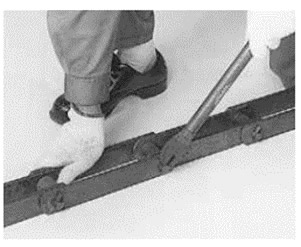Technical Data Large size conveyor chain Handling
Click here for Screw Lock Link for safe and quick chain cut and connect.
2. Connection/Disconnection
- (1) When connecting or disconnecting the chain, always begin by attaching or removing the outer plate on the T-pin side.
- (2) Loosen the take-up so that there is no tension on the chain.
⚠ Notes
Whether the conveyor is parallel, slanted, or vertical, always attach a chain block or piano wire to the area to be connected/disconnected to ensure there is no tension on the chain.
2.1 Disconnecting
1) Remove the T-pin
Use a T-pin tool or monkey wrench to bend the T-pin straight before removal.
Always use a new T-pin. Never reuse straightened T-pins.
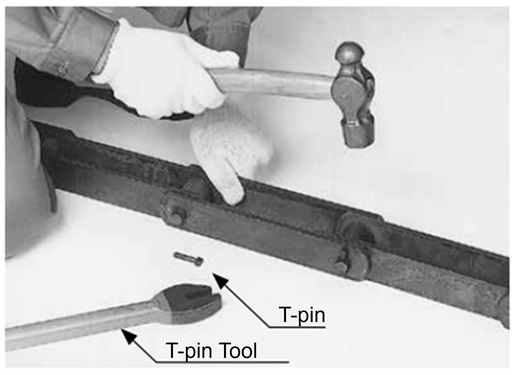
2) Alternate Hitting Two Pins
Place a holding tool against the inner link and hit the pin with a hammer to remove as shown in the photo below.
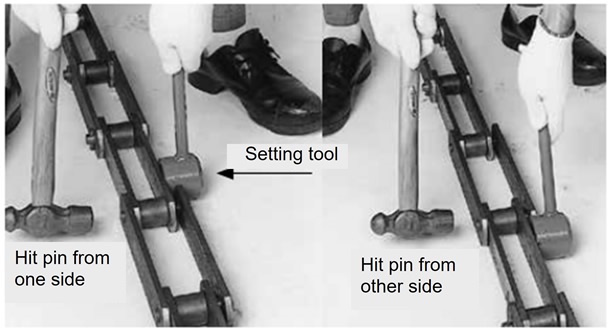
3) Remove the Outer Link
Remove the outer plate along with the two pins as shown in the photo below. Do not reuse the removed plates.
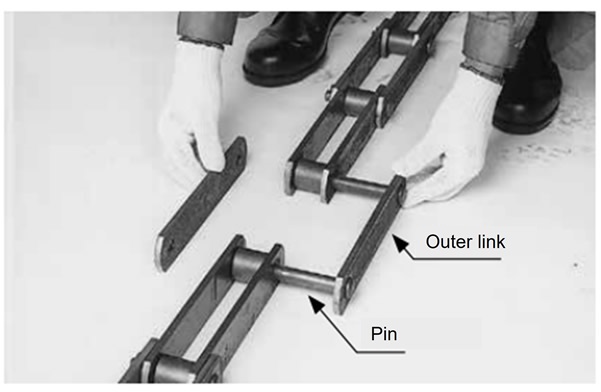
4) Specialty Tools
Pins can be safely and quickly inserted and removed without affecting chain performance by using a cutting tool. The photo below shows a chain being disconnected using a chain vice.
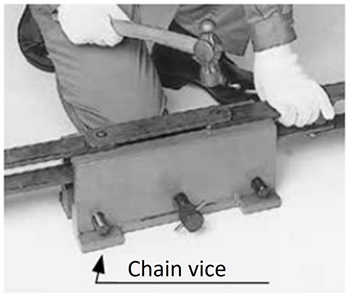
2.2 Connection
1) Preparation
With a new chain, remove the outer plate on the outer link on the T-pin side. Refer to the previous section for pin removal.
⚠ Notes
Widening the plate holes or narrowing the pin diameter to make pin insertion or removal easier will lead to dramatic loss of chain performance and accidents.
2) Connecting Two Strands of Chain
Draw the two ends together and connect with outer plates.
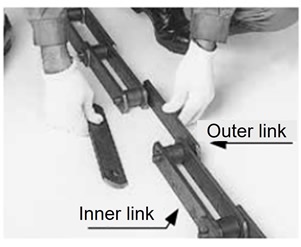
3) Pin Insertion
Hold the concave portion of a pin tool against the pin on the T-pin side. Hit pin head with a hammer until the pin pokes out through the T-pin hole on the outer plate.
The pin can be inserted easily by using a chain breaker. Check the chain at this point to ensure that it articulates smoothly.
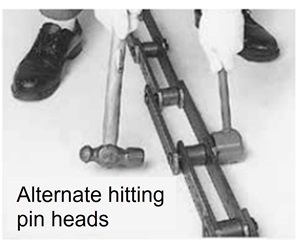
4) Bend the T-pin
Insert the T-pin into the pin and bend the tip 30 degrees or more with a T-pin tool or monkey wrench so that it will not come out.
Once a T-pin is used, bending it back will result in cracking. Do not reuse T-pins.
